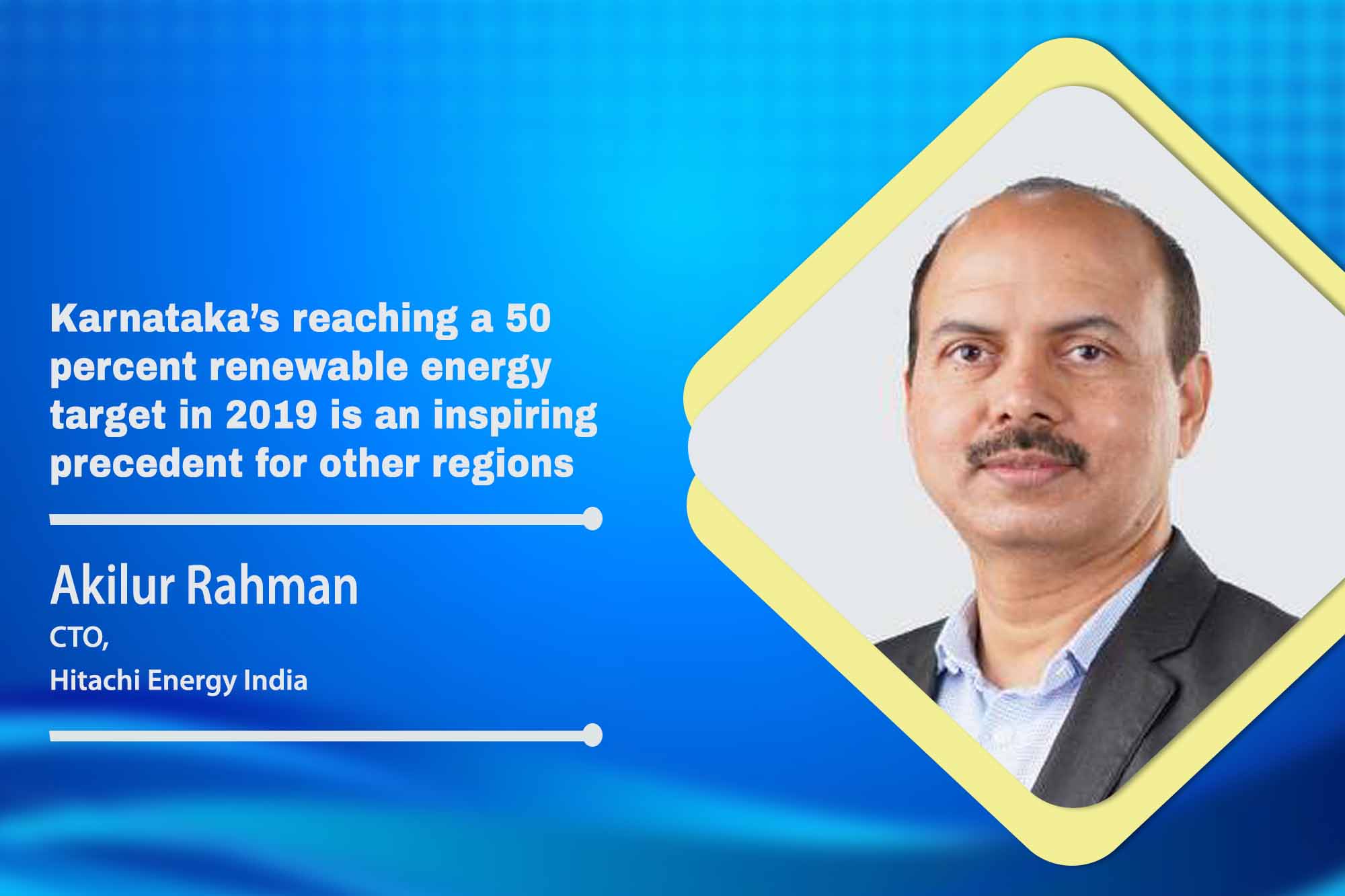Hitachi Energy India leads the charge towards sustainable energy transition
By EPR Magazine Editorial March 27, 2024 11:23 am IST
By EPR Magazine Editorial March 27, 2024 11:23 am IST

Karnataka’s reaching a 50 percent renewable energy target in 2019 is an inspiring precedent for other regions.
Energy transition in India represents a complex yet imperative endeavour in the fight against climate change and pursuing a resilient energy infrastructure. By embracing technological innovation, fostering collaboration, and adopting innovative business models, India can pave the way for a sustainable energy future for its citizens and the global community. Akilur Rahman shares his views on the industry with the EPR Magazine.
Expanding renewable energy sources
The energy landscape in India is undergoing a monumental shift towards sustainability, driven by ambitious targets and innovative technological solutions. As the nation sets its sights on a carbon-neutral future by 2070 and aims to achieve 500 gigawatts of renewable energy capacity by 2030, the path forward requires a multifaceted approach encompassing various strategies and advancements. One of the key pillars of India’s energy transition is the significant expansion of renewable energy sources, particularly solar and wind power. Karnataka’s reaching a 50 percent renewable energy target in 2019 is an inspiring precedent for other regions. However, to scale up renewable energy deployment across the country, there is a need for continued innovation in both technology and policy frameworks. In addition to onshore renewables, exploring offshore wind energy holds great promise for India’s energy future. The vast coastline presents ample opportunities for harnessing wind power, which can significantly contribute to the renewable energy mix while reducing reliance on fossil fuels.
Ensuring grid stability amidst the intermittency of renewable energy sources is a critical challenge. Advancements in power electronics-based technologies are vital for enhancing grid control and stability. Solutions such as high voltage direct current (HVDC) technology enable efficient power transmission over long distances, offering superior control and minimising environmental impact. Furthermore, as consumption patterns evolve, sectors like electric vehicles (EVs), data centres, and green hydrogen production are emerging as key players in the energy landscape. Integrating these sectors into the grid requires innovative approaches to manage demand and optimise resource utilisation effectively. The concept of prosumers, where consumers become active participants in energy production and storage, is gaining momentum. Initiatives like solar rooftop installations and grid feeding empower consumers to contribute to the overall energy transition while reducing their carbon footprint and energy costs.
Digitalisation driving energy transitionMicrogrids also play a crucial role, particularly in remote areas and industrial complexes, by ensuring reliable energy supply and grid resilience. These localised energy systems enable communities to become more self-sufficient and less reliant on centralised power infrastructure. Digitalisation is another transformative force driving the energy transition. Artificial intelligence (AI), machine learning (ML), and blockchain are being leveraged to optimise grid operations, enhance asset performance management, and enable predictive maintenance. Utilities can improve efficiency, reliability, and security across the energy ecosystem by embracing digitalisation. However, realising India’s ambitious energy goals requires technological innovation and innovative business models. Energy-as-a-service and storage-as-a-service models are emerging as effective ways to decouple capital expenditure from operational costs, making green technologies more accessible and affordable for a wider range of stakeholders.
Collaboration among various stakeholders is essential to accelerate the transition towards a sustainable energy future. Utilities, industries, technology providers, and policymakers must work together to overcome barriers and drive meaningful progress. Public-private partnerships facilitate the deployment of innovative solutions and create an enabling environment for investment and innovation.
Spokesperson: Akilur Rahman, CTO- Hitachi Energy India
We use cookies to personalize your experience. By continuing to visit this website you agree to our Terms & Conditions, Privacy Policy and Cookie Policy.